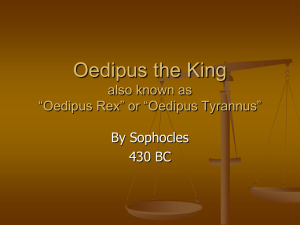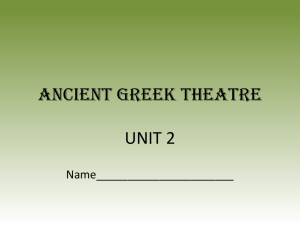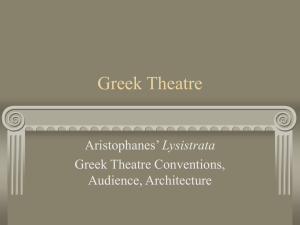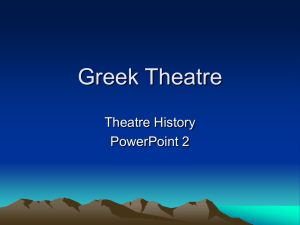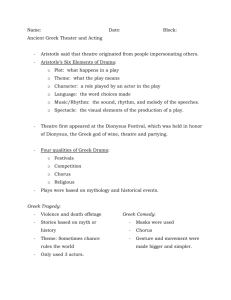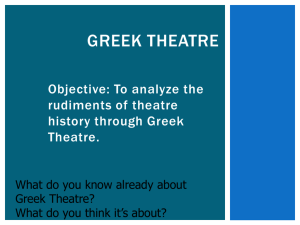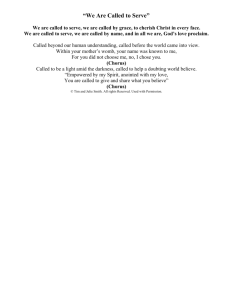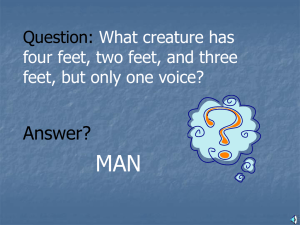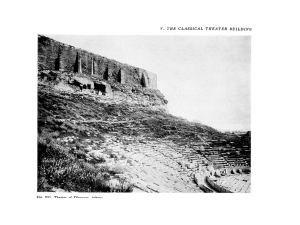http://www.richeast.org/htwm/Greeks/theatre/actors.html
advertisement
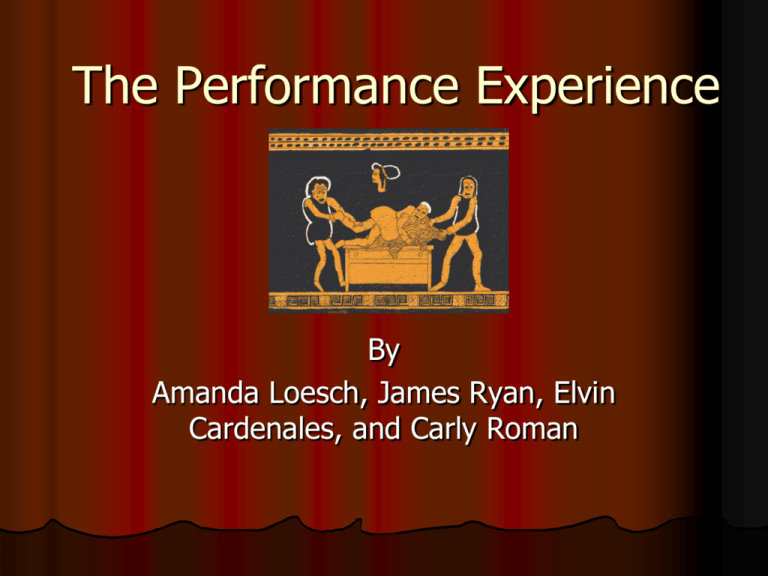
The Performance Experience By Amanda Loesch, James Ryan, Elvin Cardenales, and Carly Roman Essential part of the play Narrates and reflects on the action in the play Provides background information to make the play less confusing Originally consisted of 12 members. Sophocles added 3 more people. Also acted as extras in play and dancers Chorus was located in the center of the theatre The chorus had different names for each play based on the emotions that play evoked. Tragedies = "emmelia." Comedies = "codrax." Satyric dramas = "sicinnis.“ The Performers When Greek theatre began, there were no actors (dithyrambus). There was only the chorus. Thespis, Aeschrylos and Sophocles were the first to use actors. Hypocritis=leading characters(always men!) Female roles were played by men before their voices changed. After the second and third actors were added, the dialogue between the actors and chorus became extremely important. Happy characters wore bright colors, tragic characters wore dark colors. In comedies, the chorus would wear costumes. Each actor wore a mask in order to express a characters sex, age and feelings. It was easy for an actor to change their character, since all they had to do was change their mask. The Audience One of the largest aspects of the Performance Experience, and Greek Culture in general, is the audience. The theatre was a major source of entertainment and all kinds of people enjoyed going to see the performances. • The audience was always huge, ranging from outrageous things to get the audience to notice them • 14,000-17,000 people from rich noblemen to the average citizens. Even poor farmers were given special discounts to be able to see the play. In this manner, everyone could enjoy the performances put on by the actors and playwrights. • Audience determined which play was the best, judges would read their reactions and take the audience’s opinion into account • Dislike=unruly mock actors and throw food real embarrassing possibility. • Extremely loud hard to grab attention, actors had to do • Quiz 1. 2. 3. 4. What did the masks show about the character? Masks showed sex, age, and feeling. Where was the chorus located? The chorus was in the center of the theatre. True or False: Only the rich were could afford to see the plays. False. There were discounts for the poor. How were the names of the choruses decided for each play? The names were based on the type of play. Works Cited 1. 2. 3. 4. Phillips,K. “Ancient Greek Actors.” Rich East High School. 29 March, 2000. Web. Retrieved 16 March, 2011 from http://www.richeast.org/htwm/Greeks/theatre/actors.html Fronseca, Ruben. "Ancient Greek Theatre." Cartage. Web. 18 Mar. 2011. <http://www.cartage.org.lb/en/themes/arts/Architec/Ancient Architectural/GreekArchitecture/GreekBuilding/Theater.htm#F estivals>. Lesky, A. Greek Tragic Poetry (1983). Chapter 1: "Problems of Origin." Pickard-Cambridge, A.W. Dithyramb, Tragedy, and Comedy (1927) ________, second edition by Webster, T.B.L. (1962) Winkler, J. "The Ephebes' Song: Tragoîdia and Polis." reprinted in Nothing to Do with Dionysus? (1990) Burkert, W. "Greek Tragedy and Sacrificial Ritual." Greek, Roman, and Byzantine Studies 7 (1966): 87-121.

